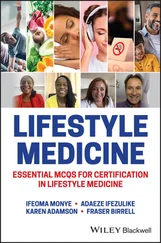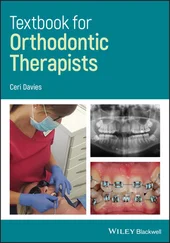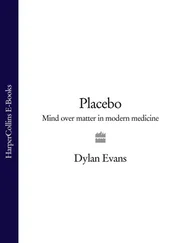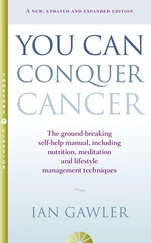1 ...6 7 8 10 11 12 ...31 Obesity is the consequence of a long-term energy imbalance, whereby energy intake is higher than energy expenditure.
Overall, these unhealthy lifestyle behaviors and habits seem to be the result of environmental and social changes associated with the lack of supportive policies in sectors such as health, agriculture, education, transportation, urban planning, environment, distribution, and food trade. Although their involvement in the pathogenesis of obesity has not been fully elucidated, it is now clear that social and environmental factors may influence food intake and energy expenditure more than the internal regulatory mechanisms that regulate people’s weight. Moreover, the human body has been programmed to preserve energy, and this has deleterious effects when people are found in an obesogenic environment ( Table 2.1). The proclivity of an individual to these environmental influences is affected by genetic and other biological factors.
TABLE 2.1 Technological clashes with our biology.
Source:Popkin et al. (2012).
| Biology |
Technology |
| Sweet preferences |
Cheap caloric beverage revolution |
| Thirst and hunger/satiety mechanisms not linked |
Caloric beverage revolution |
| Fatty food preference |
Edible oil revolution – high‐yield oilseeds, cheap removal of oils |
| Desire to eliminate exertion |
Technology in all phases of movement/exertion |
Cardiovascular Disease: Epidemiology and Impact of Modern Lifestyle
CVDs include ischemic heart disease (IHD), stroke, heart failure and peripheral arterial disease, and a number of cardiac and vascular conditions, such as cerebrovascular disease, rheumatic heart disease, and congenital heart disease. It has been estimated that heart attacks and strokes account for over 85% of CVD death events. The events themselves are generally acute in nature and result from an obstruction of blood flow to the heart or brain due to the chronic accumulation of lipid deposition on the inner walls of the blood vessels. In addition, strokes can also occur as a consequence of a brain blood vessel bleeding or because of the presence of blood clots.
CVDs have emerged as the primary cause of death around the globe. According to the 2019 Heart Disease and Stroke Statistics report from the American Heart Association, someone dies of CVD every 38 seconds. Nearly 80% of premature deaths, i.e., death events among people under 70 years old, have been recorded in low‐to‐middle‐income countries, with 37% being attributed to CVDs. Underdeveloped or developing countries suffer high rates of CVD mortality, whereas high‐income industrialized countries and some regions in Latin America show the lowest CVD mortality.
CVD burden can be attributed to modifiable risk factors such as diet, exercise, tobacco smoking, obesity, hypertension, dyslipidemia, diabetes mellitus, and alcohol consumption.
Similar to other major NCDs, CVD burden can be attributed to modifiable risk factors such as unhealthy diet, sedentariness, tobacco smoking, obesity, hypertension, dyslipidemia, T2DM, and excessive alcohol consumption. The variation in the presence of those lifestyle risk factors between countries may explain the difference in CVD burden observed among the countries.
Diabetes Mellitus: Epidemiology and Impact of Modern Lifestyle
According to the WHO, diabetes mellitus is defined as “a metabolic disorder of multiple etiology, characterized by chronic hyperglycemia (high blood sugar) with disturbances of carbohydrate, fat, and protein metabolism resulting from defects in insulin secretion, insulin action, or both.” Diabetes mellitus is classified into type 1 (T1DM; insulin‐dependent) and type 2 diabetes mellitus (T2DM; non‐insulin‐dependent or adult‐onset). While the main feature of T1DM is the defective production of insulin (by the pancreas) and the requirement of daily administration of insulin, T2DM is characterized by inefficient use of insulin from the body.
T1DM cannot be prevented, and we still do not fully understand what causes the disease. Furthermore, it is still under investigation whether environmental factors could trigger the destruction of the body's insulin‐producing cells. On the other hand, T2DM development and progression are affected by genetic and environmental factors; exposure to an obesogenic environment, characterized by sedentary behavior, increased stress, and excessive energy consumption, is known to exert an effect on preexisting genetic factors.
The prevalence of T2DM has dramatically increased since the 1980s, affecting more than 430 million people, compared to 108 million about three decades ago. The increase in diabetes cases is more evident in low‐ to middle‐income countries. According to the World Health Organization, more than 1.5 million people worldwide died due to diabetes in 2019. The Centers for Disease Control and Prevention (CDC) estimated that almost 80.000 deaths occur each year due to diabetes in the United States. The WHO projects that by 2030, diabetes mellitus will be the seventh most important cause of mortality.
Diabetes mellitus can progressively lead to a host of other metabolic abnormalities affecting the heart, blood vessels, eyes, kidneys, and nerves. It has been shown that individuals suffering from diabetes mellitus have two to three times higher risk for developing CVDs compared to their nondiabetic counterparts. Furthermore, reduced blood flow and nerve damage (i.e., neuropathy) in the lower extremities can substantially exaggerate the occurrence of foot ulcers and infection, even leading to amputation of the lower limbs. Chronic impairments in the small blood vessels of the retina (i.e., retinopathy) can gradually lead to blindness; approximately 3% of all blindness cases worldwide could be attributed to diabetes. Finally, diabetes mellitus constitutes one of the major causes of renal failure.
Diabetes mellitus can progressively lead to other metabolic abnormalities affecting the heart, blood vessels, eyes, kidneys, and nerves.
Cancer: Epidemiology and Impact of Modern Lifestyle
Cancer covers a wide spectrum of diseases whose typical characteristic is abnormal cellular growth, exceeding the normal rate of cellular proliferation. Other terms used for cancer include malignant tumors and neoplasms . According to the WHO, cancer constitutes the second‐leading cause of death on a global scale – one out of six death events occurring globally is attributed to cancer. Epidemiological data show that males are mostly affected by lung, prostate, colorectal, stomach, and liver cancers, whereas females are more susceptible to breast, colorectal, lung, cervix, and stomach malignancies.
In addition to the health burden of the disease, cancer incurs a significant economic burden, over 1.5 trillion US dollars in 2020. Given that 30–50% of cancer incidence may be preventable, it is obvious that we should urgently employ preventive strategies to constrain cancer incidence. Raising public awareness regarding the risk factors associated with cancer development and providing people with sufficient information and resources to enhance compliance with healthy lifestyle behaviors stand at the forefront of cancer prevention. The major risk factors for cancer onset include consumption of tobacco products, excessive alcohol intake, unhealthy body weight, physical inactivity, and certain infections and occupational/environmental chemical exposures.
Читать дальше












